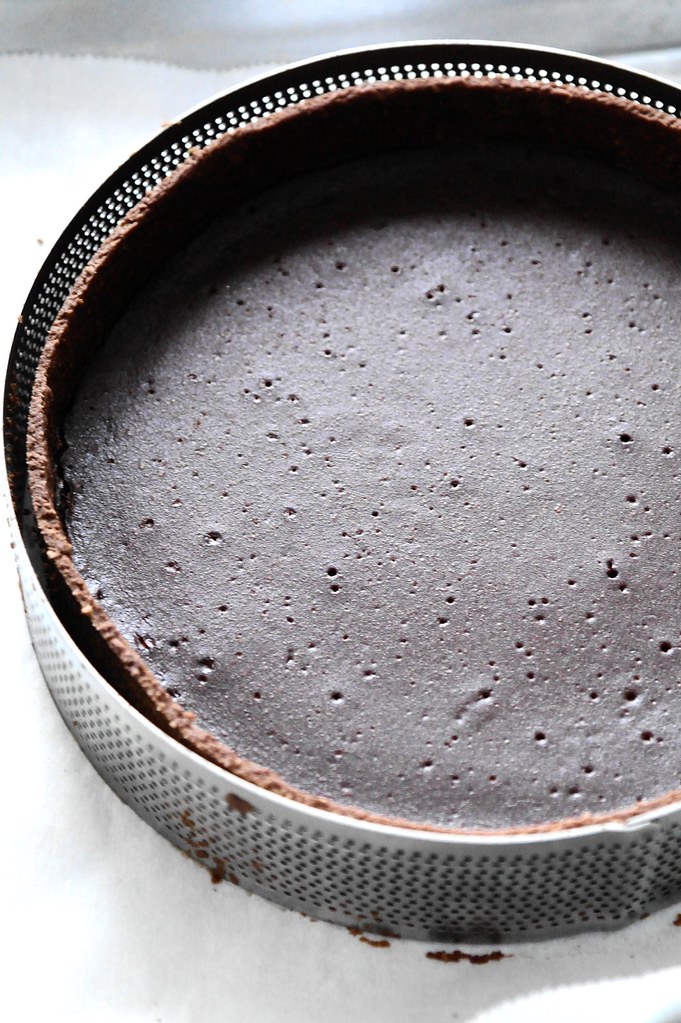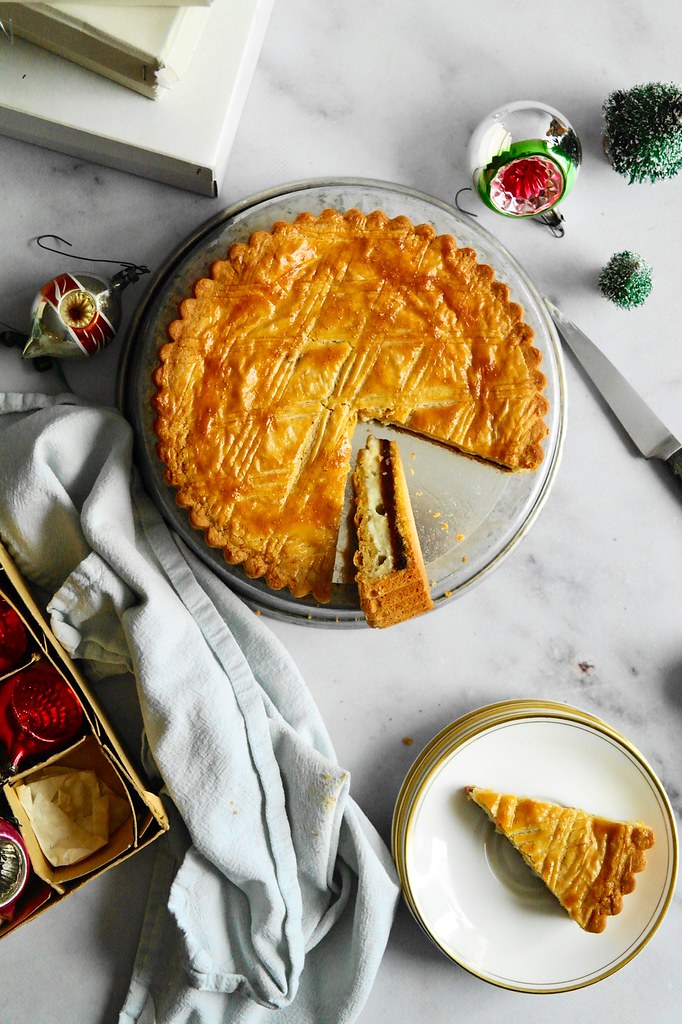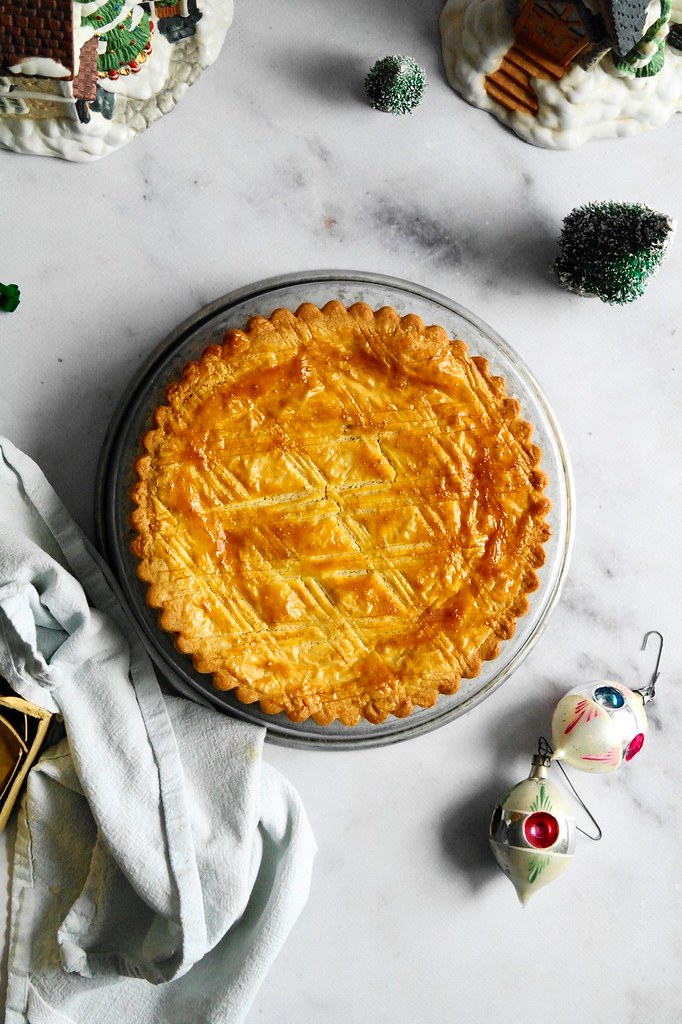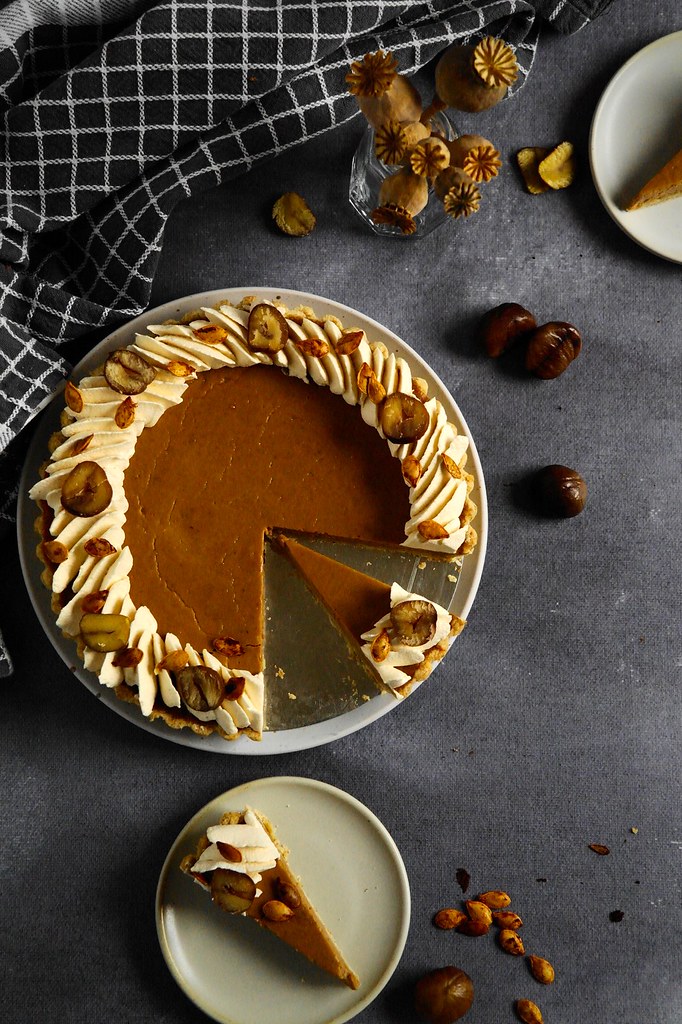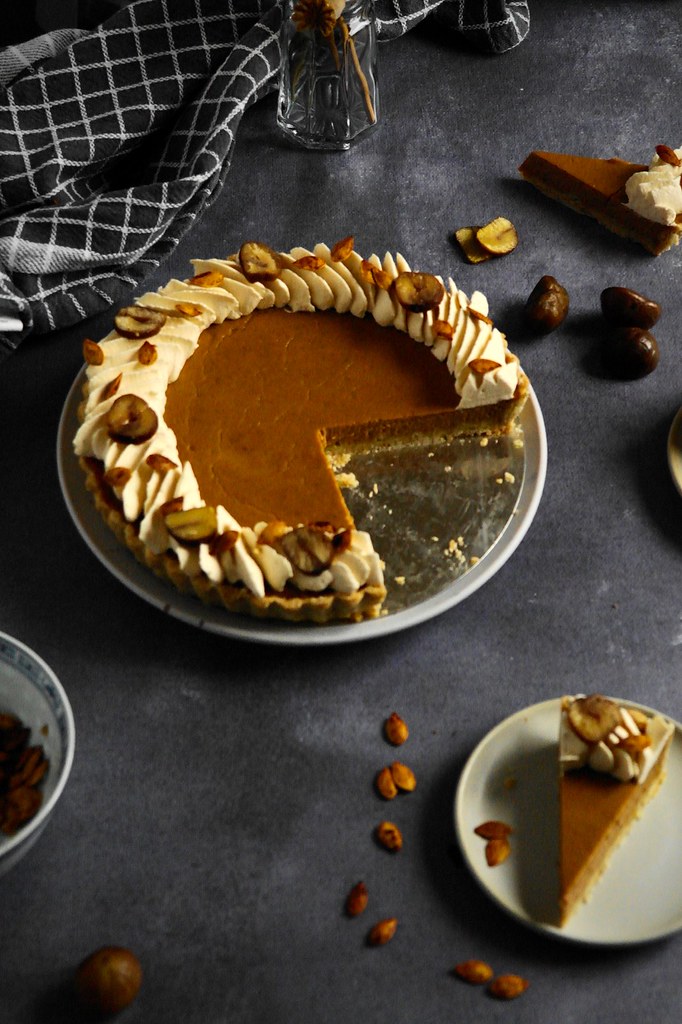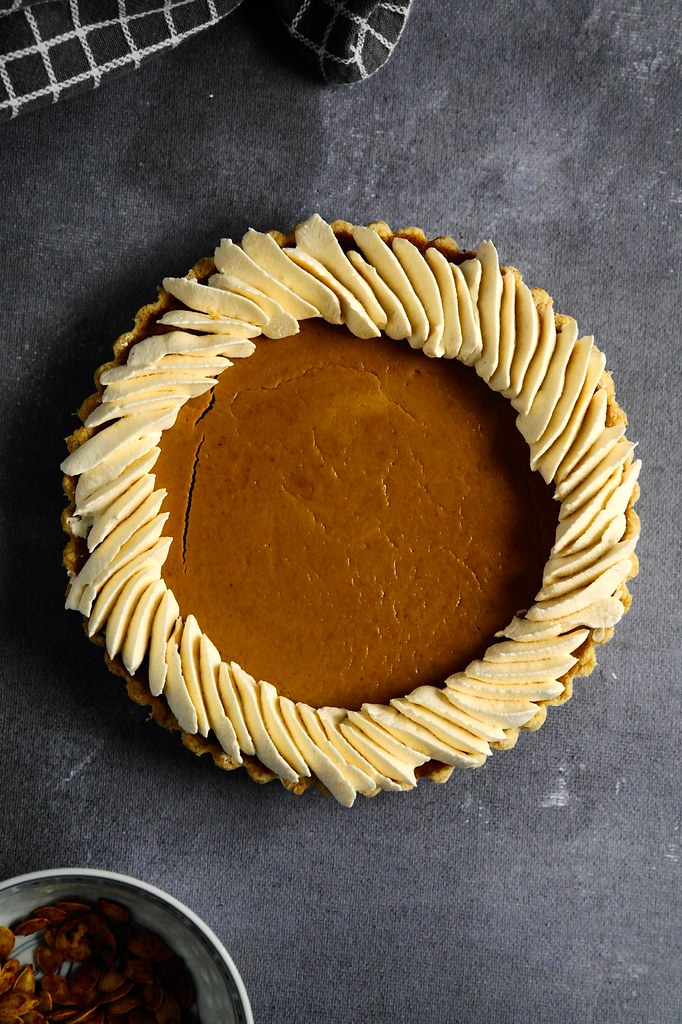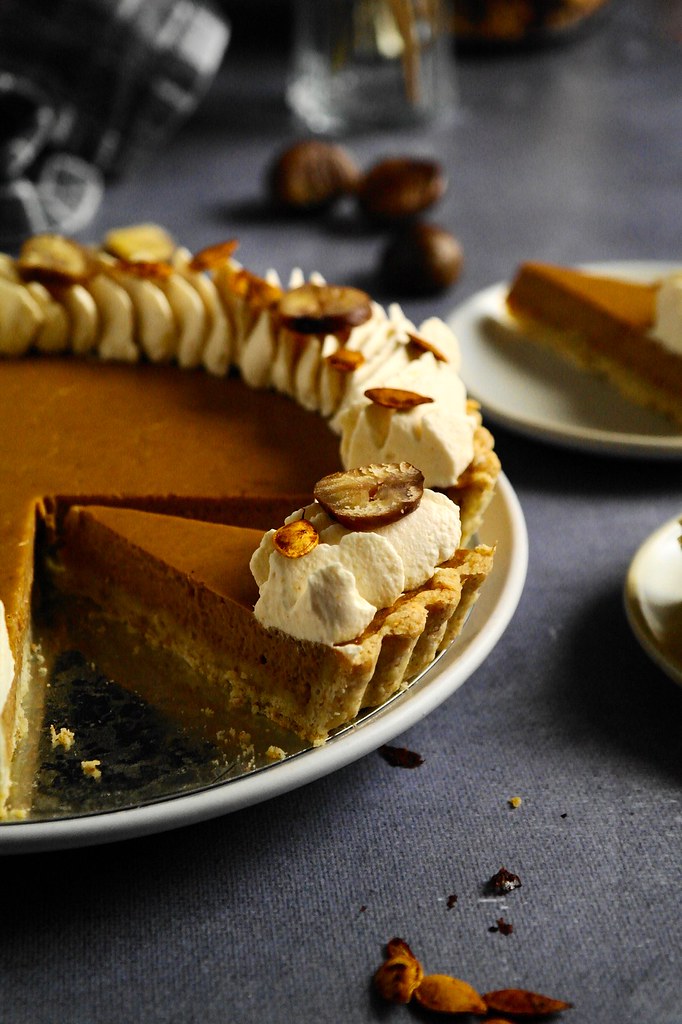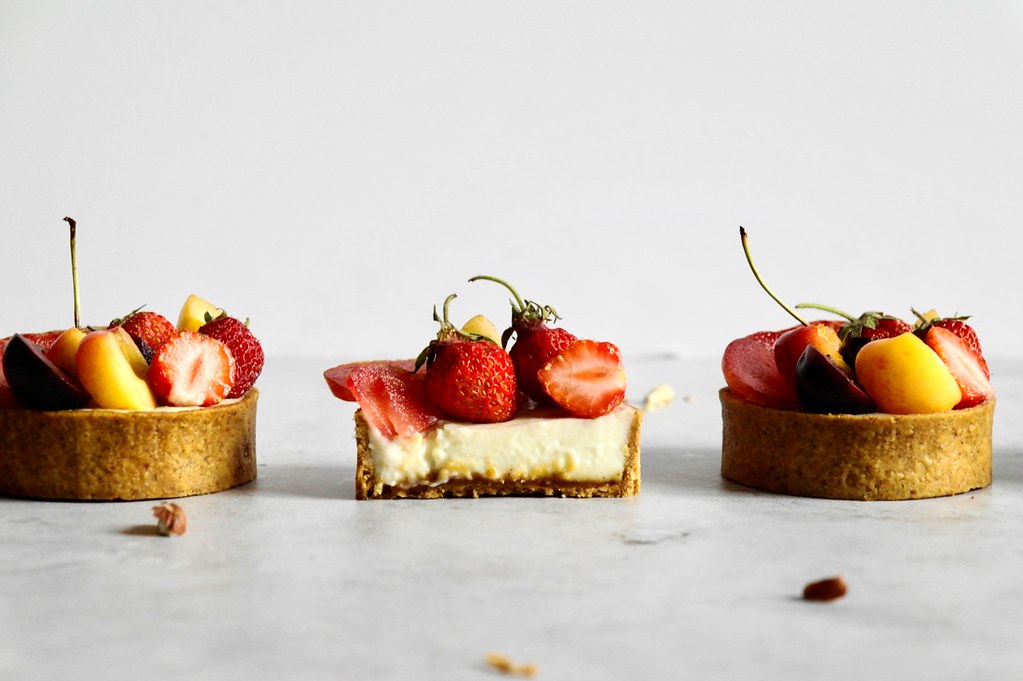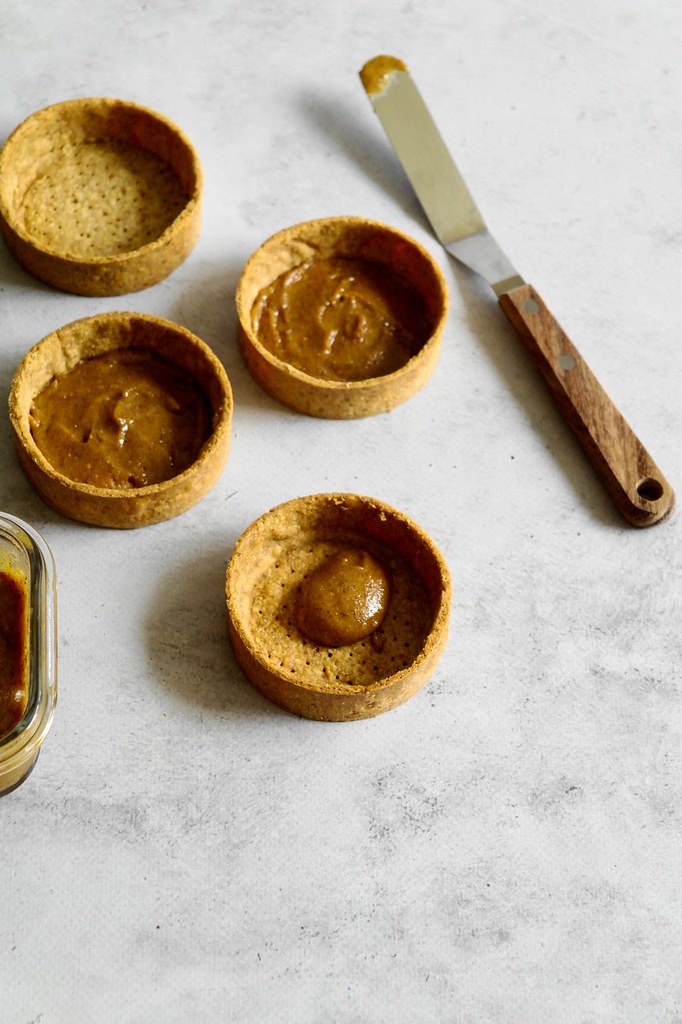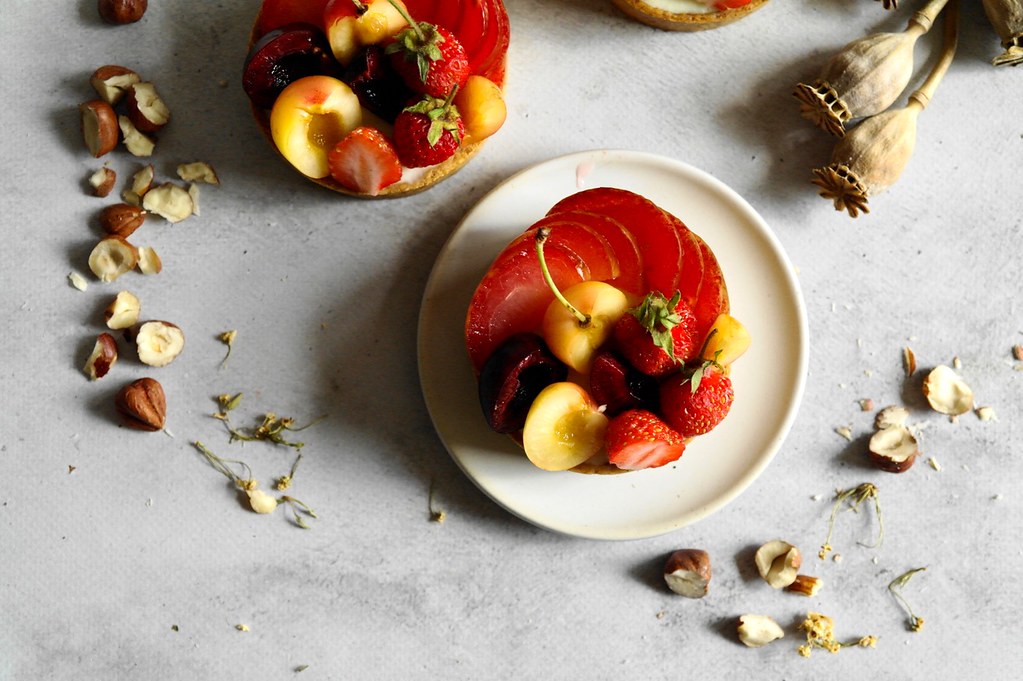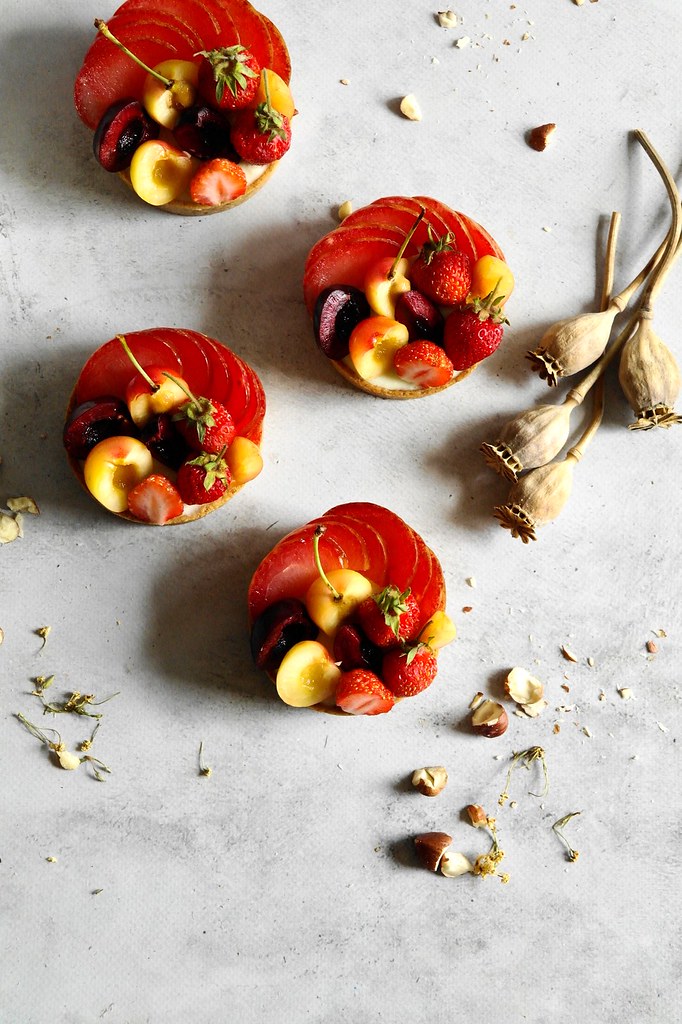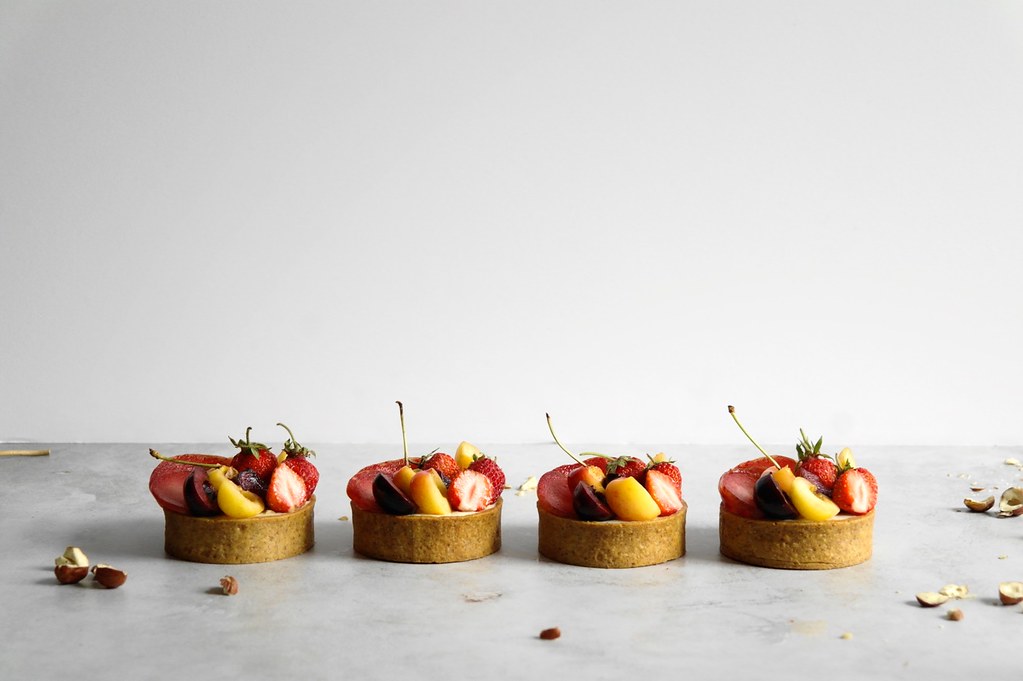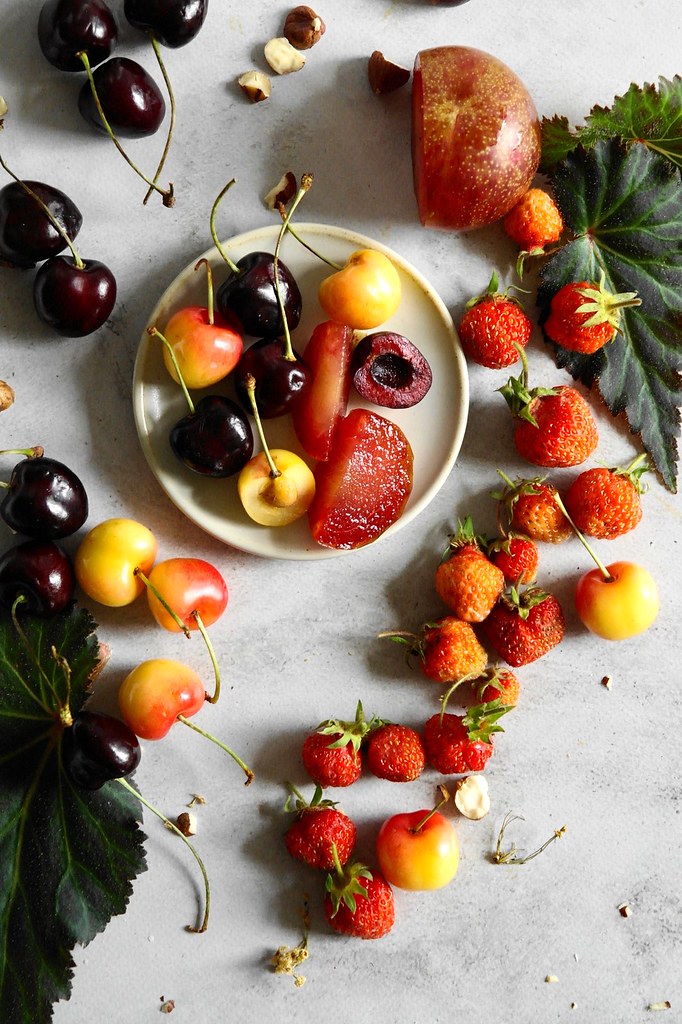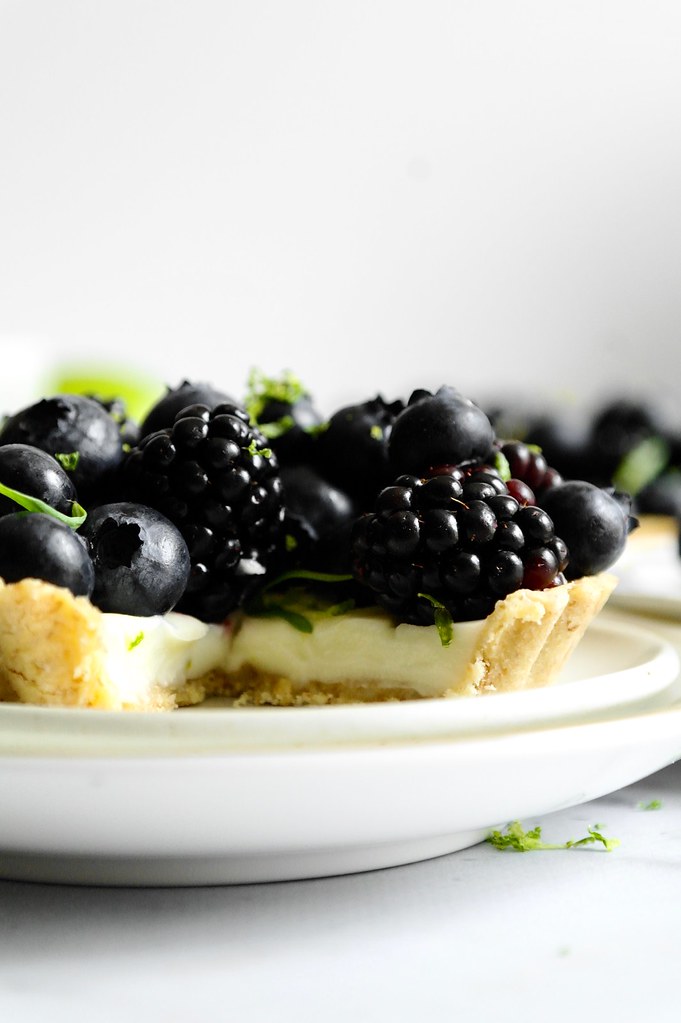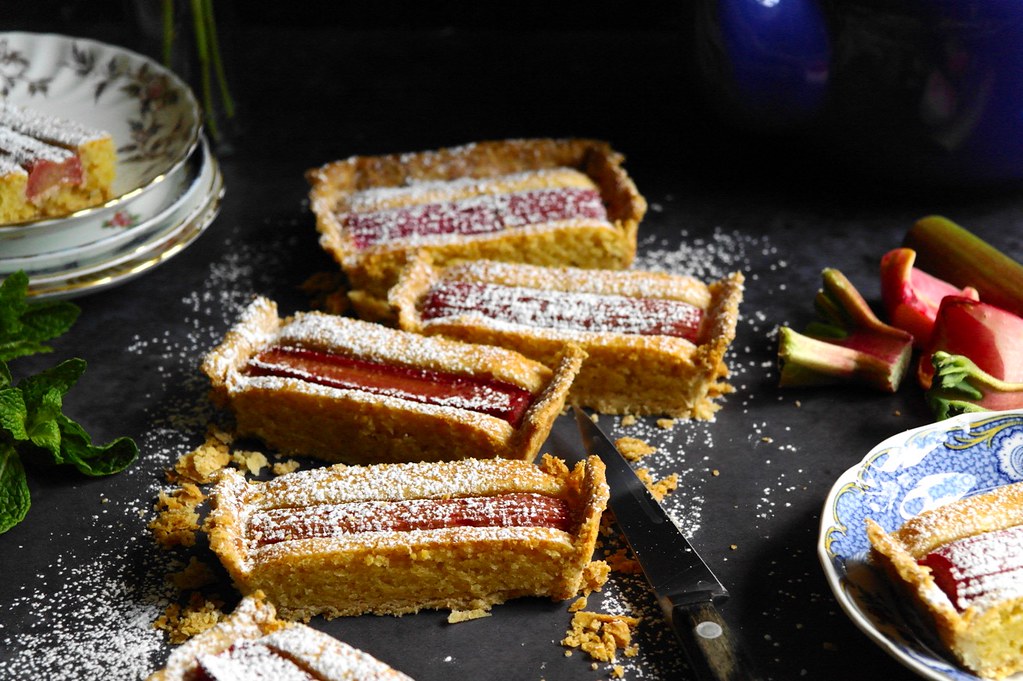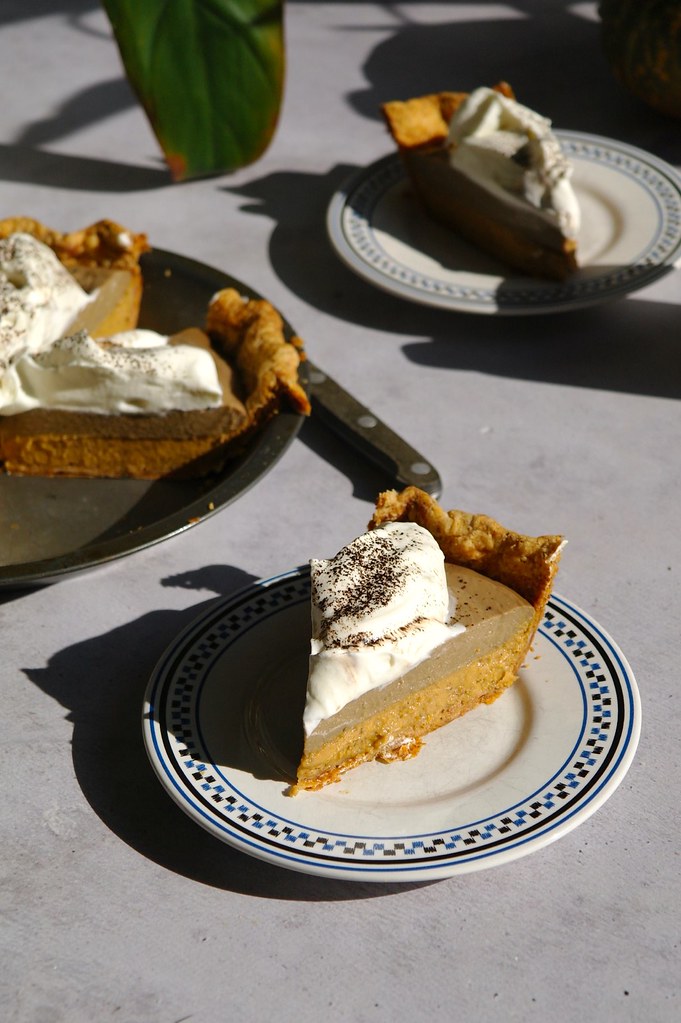
It is pumpkin pie season! Hurrah! So, here is a riff on pumpkin pie, with a bilayer of spiced pumpkin and houjicha pastry cream.
I adore the classic american-style pumpkin pie. And for the most part, I don’t really care to change it (that recipe on the pumpkin puree tin – yes!). In broad strokes, this houjicha pumpkin pie tastes just like that, but with the houjicha layer lending a gentle toasty vibe. It’s surprisingly harmonious – I think the flavours really go. And the combination lets me vibe with the houjicha, while my family’s classic pumpkin pie expectations are fulfilled.
And this format of pie lends itself to other combinations – coffee pastry cream for a pumpkin spice latte pie?

I have also come to realize, after a number of soggy bottoms, that I prefer to fully precook the crust prior to filling – even when that filling is going to be baked again. When it came to baked pie fillings, I used to only partially precook the crust. However, while blind baking, only the top and sides seemed to crisp, while the bottom (what needs help the most) would languish away in steamy sogginess. And then when I removed the weights from a partially cooked pie crust to try to crisp the bottom, it would marvellously swell up, docking be damned. Out of panic I would stop baking it and just add the filling before the cavity was obliterated completely. In the end, my attempts at a partially cooked blind baked pie crust would be no help compared to a completely unbaked pie crust…
I am a very sporadic pie maker so I realize this isn’t a universal experience, but if you’re like me – less comfortable with pies and really fond of crispy pastry bottoms – I think this is the way to go: fully blind bake the crust (with Stella Parks foolproof method!), and then if the edges get a little too dark during the second bake with filling, just cover them with foil. Crispy top, sides and bottoms!

houjicha & pumpkin pie
Pumpkin filling based on the label from the canned pumpkin puree, pastry cream based on standard ratios. Blind baking method from Stella Parks.
equipment: 9-inch pie tin
crust
- 1 stick butter worth of your favourite pie dough recipe (I’ve become a big fan of Stella Parks’s recipe! here you see it made with no sugar and 50% whole wheat flour)
pumpkin filling
- 200g canned pure pumpkin puree
- 1 large egg
- 40g brown sugar (increase to 70g for a more standard sweetness)
- ½ tsp ground cinnamon
- ¼ tsp ground dried ginger
- 1/8 tsp ground cloves
- 1/8 tsp grated nutmeg
- ¼ tsp kosher salt
- 125g half-and-half or evaporated milk
houjicha pastry cream
- 3 tsp houjicha powder
- 1 1/2 tbsp hot water
- 120g heavy cream
- 240g whole milk
- 20g cornstarch
- 3 egg yolks
- 40g granulated sugar
- 1 tbsp butter
to serve
- lightly sweetened whipped cream
- houjicha powder
Begin by preparing the crust. Roll out the pie dough on a floured surface and use to line a 9-inch pie tin. Drape the dough into the pie plate and press it down into the corners. Trim the pastry such that there is a 1″ or so overhang all the way around. Then tuck the overhanding pastry underneath so the edge is a double thickness of dough. Crimp the edges, dock the bottom, then cover and chill the pie crust completely.
To blind bake, I’ve become a big fan of Stella Parks’s method: preheat the oven to 350F. Line the pie crust with aluminum foil, pressed to fit into all the corners, and fill to the brim with sugar. Bake for about 60-70 minutes, then remove the foil and bake another several minutes to dry out and slightly crisp the bottom. Let cool on a wire rack.
Now for the pumpkin filling. Lower the oven temperature to 350F. Whisk together the eggs, pumpkin puree, sugar, spices and salt until smooth. Finally, beat in the milk and cream. Pour into the partially baked pie crust. Tap on the counter to pop any bubbles that might have formed. If the edges of the pie crust are already quite browned, use strips of foil to cover the edges (you can also do this partway through baking if you notice the pie crust is getting too dark).
Bake until only the centre is still a bit jiggly and a knife inserted into the centre is removed clean, about 30 minutes. While you let the pie cool, begin on the houjicha pastry cream.
Next up, the houjicha pastry cream layer. Whisk together the houjicha powder and boiling water in a small bowl until no lumps remain. Place the milk and cream into a small saucepan and whisk in the houjicha slurry.
In a separate bowl, whisk together the cornstarch, egg yolks and sugar.
Heat the houjicha milk until it comes to a simmer. Slowly pour into the egg yolk mixture, while whisking constantly, to temper the eggs.
Return to the saucepan and cook over medium heat while whisking constantly. Look for the pastry cream to begin to bubble and to thicken considerably. To ensure the starch is cooked, let the pastry cream cook at a slow bubble for 1 minute (all the while whisking very vigorously!). Immediately remove from the heat. Pass the pastry cream through a sieve into another bowl and whisk in the butter.
Pour the pastry cream onto the pie. Press a sheet of plastic onto the surface of the pastry cream and place in the fridge. Chill completely overnight.
Finally, to serve. Top the pie with dollops of whipped cream (what you see in the pictures is 1 cup of whipping cream, whipped, for a generous amount and dolloped in some sort of wonky flour shape) and dust with a bit of houjicha powder.









